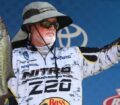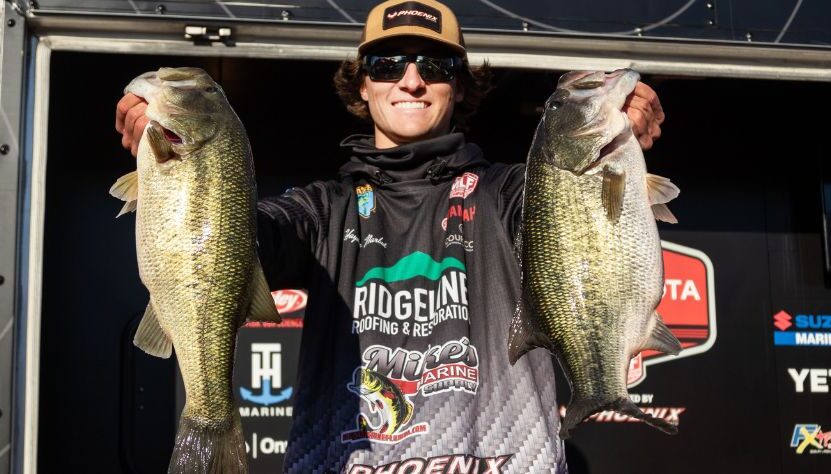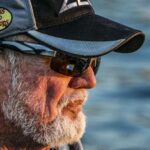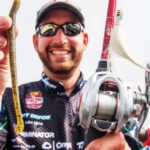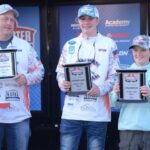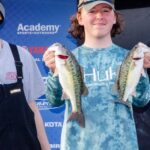Editor’s Note: Hayden Marbut is a 20-year-old Auburn University student who has come up through the high-school tournament bass fishing ranks, and who bested 260 top anglers on Lake Guntersville on February 16, 2024, to win $100,000.
“This was my first solo win in my bass-fishing career,” Marbut says. “I won a high school bass fishing national championship and was able to win two national collegiate championships last year. Those wins drove me to compete at this level.”
Marbut feels his ability to use forward-facing sonar was the key to his bass-fishing success. Although 260 anglers were competing, Marbut says, “Lake Guntersville is one of the few lakes in the nation that can accommodate that many competitors on the same day.”

Marbut mentioned that about half the field of anglers at the Guntersville tournament was using forward-facing sonar. The rest of the field majored on fishing lures like chatter baits, Rat-L-Traps and the Alabama Rig. A transducer for forward-facing sonar usually costs around $1,500, while your screen can cost anywhere from $2,000 to $5,000. Forward-facing sonar isn’t a device for everyone to use; however, for serious tournament fishermen, like Marbut, it’s a necessity.
“Forward-facing sonar is a very-consistent way to fish,” Marbut, who’s accustomed to winning when bass fishing, says. “I’ve been super fortunate; I won the High School National championship with my partner, Tucker Smith, and was able to win two National Collegiate Championships last year. Those wins drove me to compete at this level.” To learn what you’re seeing on the screen of your transducer takes awhile. I’ve spent a lot of time to figure out which way the bass are swimming and time my cast with the current and the wind.”
When I asked Marbut, “If you see three or four bass suspended around a school of shad, how do you pick out the biggest of the four to try and catch, he answered, “I’m not specifically targeting the biggest bass. You’re only going to catch the bass that reacts the fastest to your lure. Because Guntersville Lake has so much fishing pressure, if you see three bass together, you’ll be lucky to catch one.”
To win at Guntersville in February, Marbut was using a 3/8- and a ½-ounce Picasso Tungsten Ball Head lure. “To that head, I added a variety of fluke style baits. I’ve found the fluke type baits to be the best presentation to the bass feeding on shad.”
For the professional bass-fishing tournaments Marbut’s entered, he has won over $150,000.
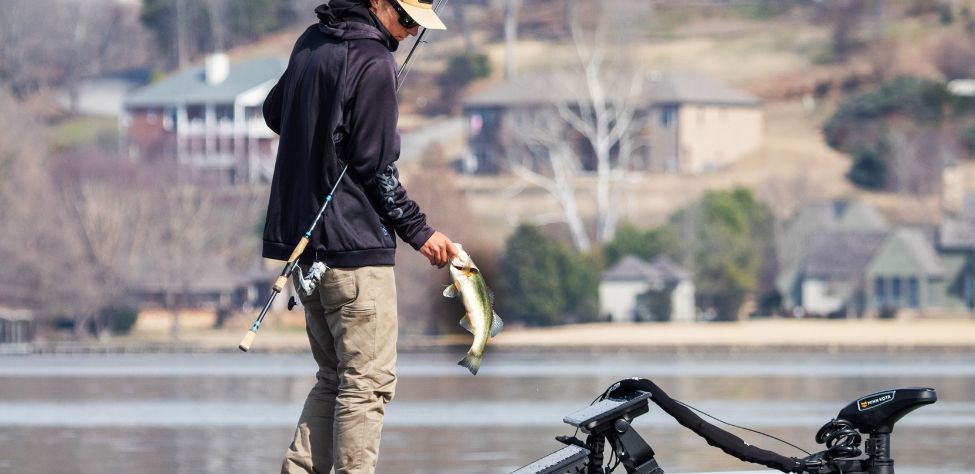
“I’m a junior this year at Auburn, and I’ll be a senior next year,” Marbut explains. “However, more than likely I’ll stay a fifth year because there’s no way I can on time with as much time as I take off for my fishing. Most of my teachers at Auburn are very understanding when I tell them what I’m trying to do.”
Ridgeline Roofing and Restoration is one of Marbut’s major sponsors, and he has several other sponsors. “Attaining sponsors is much-more difficult now than it has been in the past, because unless you have a strong social media presence, sponsors aren’t really interested in considering sponsoring you. You can find me on Instagram at @haydenmarbutfishing and on Facebook . Then you can see what I’m doing.”
When Marbut was asked what he thinks the future of forward-facing sonar is, he said, “I think the use of forward-facing sonar is going to continue to grow and be a major tool that fishermen will use to find bass in places that they’ve never found them before. But it’s not just for bass fishing. We’re seeing many crappie guides using forward-facing sonar also. Forward-facing sonar allows you to find fish in open water where you’ve never looked for them before.”
Looking for more content? Check out our YouTube channel and watch Shaw Grigsby – How to Mentally Prepare to Fish a Bass Tournament by John E. Phillips.
Expert Guidebooks on Bass Fishing: Best Sellers

If you want to become the best you can be, find someone who’s already become the best at what you want to do and follow his or her instructions. This is what I’ve done in my new book, Bass Pros’ Season by Season Tactics.
In this book, I’ve chosen some of the best bass fishermen to give you advice on how to find and catch bass during each period of a bass fish’s life, including professionals like Kevin VanDam, Denny Brauer, David Fritts, Rick Clunn, Larry Nixon, George Cochran, Mark Davis, Woo Daves, Gary Klein, Davy Hite, Michael Iaconelli, Skeet Reese, Mark Rose, and Shaw Grigsby.
My hope is that this book will help you find and catch more bass at every time of the year and each day you’re on the water. The men included in this book are some of the best mentors I know of for successful bass fishing anywhere in the nation.
VERSIONS: AUDIBLE & PRINT
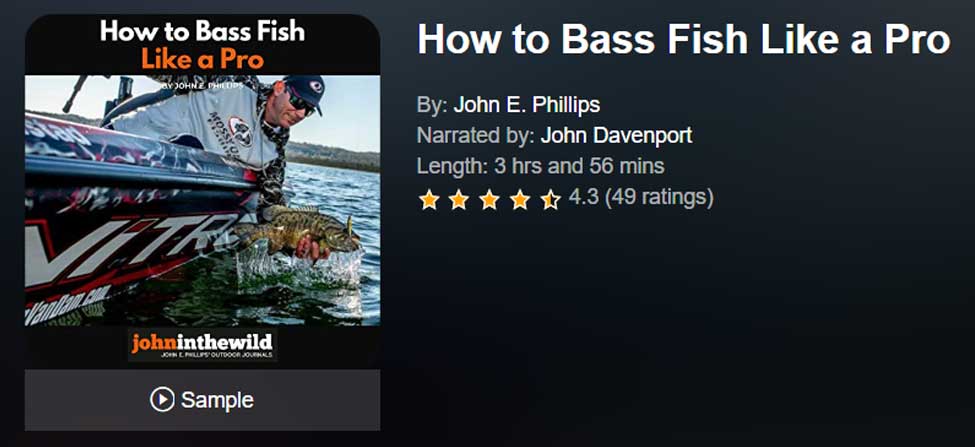
How to Bass Fish Like a Pro
If you could sit down and interview some of the best pro bass fishermen in the world, what would you want them to tell you to help you improve your bass fishing skills?
In this book, How to Bass Fish Like a Pro, Kevin VanDam explains how he catches bass consistently, and how he fishes all 12 months of the year. In the bonus chapters, he will tell you how to fish for hot-weather bass.
Denny Brauer will tell you the ways he hates to fish, how he picks the best fishing lures for different water and weather conditions, and will give you his best fishing tips for hot weather. In Brauer’s bonus chapters, he’ll teach you when to flip a jig, a tube, or a creature bait and tell you his three tips for how to be a better fisherman.
Mark Davis, in Chapter 3 of the book, explains his five secrets to becoming a better bass fisherman, how to turn your bass fishing around to the positive side, and how to catch hot-weather bass. In the bonus chapter, you’ll get six different interviews with Davis, where he tells you: three tips for becoming a better bass fisherman; his three favorite bass lures; and how to keep a big bass on the line and get it to the boat.
James Niggemeyer tells you how to become a bass pro. He also tells you how to catch bass when the weather sizzles. In Niggemeyer’s bonus chapter, he explains how to move from being a bass-club fisherman up to being a pro.
Mark Rose will explain his five favorite go-to bass lures, and how to catch bass in the middle of the summer.
In this book, you’ll hear from top-performing pro fishermen about how they catch big bass consistently, and what they do to win millions of dollars as professional bass fishermen.
VERSIONS: AUDIBLE, KINDLE & PRINT

Catch the Biggest and Most Bass in Any Lake
If you were having open-heart surgery at the hospital, you’d want the best doctor with the most experience and the latest equipment and techniques that money could buy to do your operation. You’d study these doctors’ credentials to learn who was the best.
This is the same type of research that author John E. Phillips has done with the best bass fishermen in the nation to solve the problem of how to find and catch the biggest and the most bass in any body of water that he fishes.
This is the same type of research that author John E. Phillips has done with the best bass fishermen in the nation to solve the problem of how to find and catch the biggest and the most bass in any body of water that he fishes.
In this book, you’ll hear about the techniques, tips, baits, lures, and tackle that 18 of the nation’s best professional fishermen use to support their families by winning bass tournaments and catching the most and the biggest bass they can in every tournament they fish.
Most of these anglers are Bassmaster Classic winners, Megabucks winners, Angler-of-the-Year and FLW Tour winners – like Rick Clunn, Kevin VanDam, George Cochran, Mark Davis, Paul Elias, Skeet Reese, Larry Nixon, Hank Parker, Ken Cook, Denny Brauer, Alton Jones, and Jay Yelas.
Also, every serious bass fisherman should know Timmy Horton, Mark Rose, Randy Dearman, Harold Allen, Mike Wurm, and Shaw Grigsby, men whose tactics you’ll find in this book. To learn how to fish for bass and change your bass-fishing trips from fishing trips to catching trips, this book is a must-have.
VERSIONS: AUDIBLE, KINDLE & PRINT
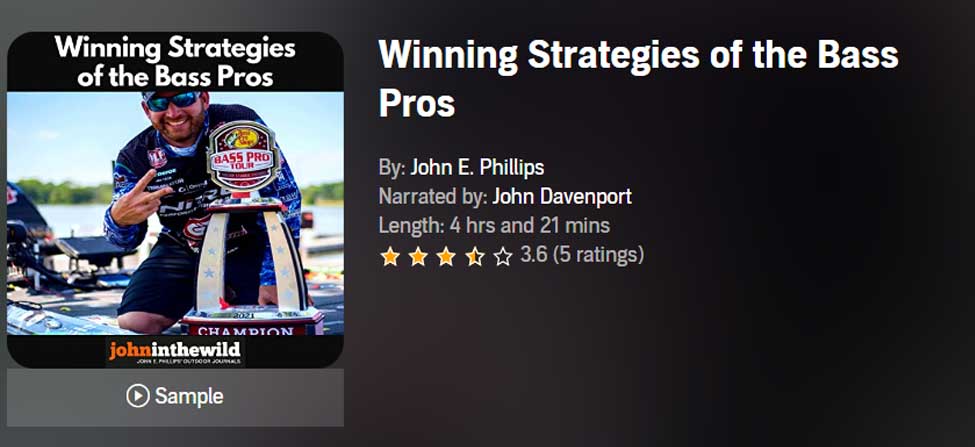
Winning Strategies of the Bass Pros
I learned many years ago if you want to be the best you can be, then you need to learn from the best – particularly when you want to be the best bass fisherman possible. That’s why I’ve written Winning Strategies of the Bass Pros about 11 top bassers.
If you’re wondering at what age you can start learning about bass fishing, you’ll see in the first two chapters about two young men who have come up through the ranks of collegiate bass tournaments – Jordan Lee, who won the Bassmaster Classic in 2017, and Dustin Connell, who won $100,000 in a B.A.S.S. Elite Series tournament in Mississippi in 2017. Top-name pros on both the B.A.S.S. circuit and the FLW circuit are in this book, including Kevin VanDam, Jay Yelas, George Cochran, Rick Clunn, Larry Nixon, Woo Daves, Randy Howell, Scott Canterbury, and Gary Klein.
VERSIONS: AUDIBLE, KINDLE & PRINT
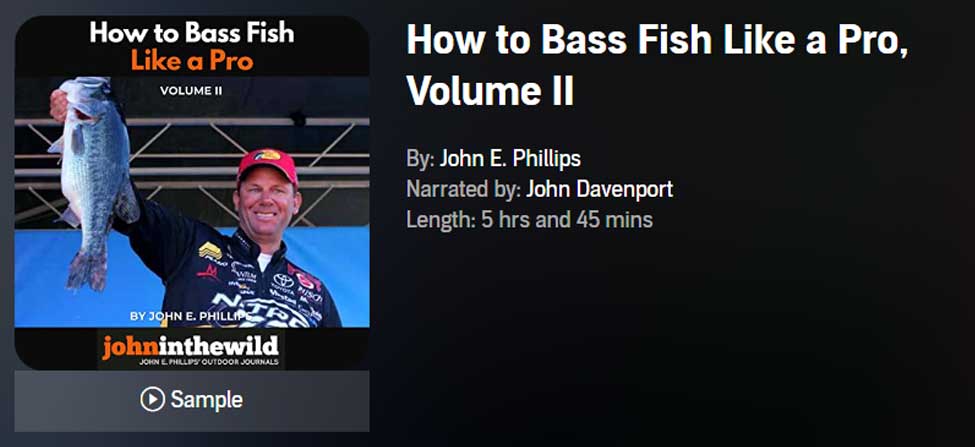
In How to Bass Fish Like a Pro, Volume II, you’ll learn tips and tactics from 21+ Bassmaster Classic winners, two Major League Fishing champions, and 20+ Bassmaster Anglers of the Year about some of the dramatic changes in bass fishing, like:
Depth Finders: You need the latest and greatest depth finders available, since they’re the brains of a bass boat with maps, GPS, side scanning, down scanning, and forward scanning features that enable you to see underwater structures and fish 100-feet away with a 360-degree view. Today’s competitive bass anglers may have four or five depth finders located on the consoles and the bows of their boats.
Other Changes in Equipment: Power fishing for bass using heavy line and rods, big baits, and bait-casting reels that resemble winches have given way to finesse fishing and new techniques like fishing the Ned Rig, the Neko Rig, the Chicken Rig, and the Tokyo Rig on spinning tackle and line as small as 6-10 pounds.
The Growth in Youth and College Competitions for Bass: A young person can begin competition fishing as early as the second grade and continue throughout high school. After that, if the competitor qualifies, he/she may win a scholarship to fish on a college team that eventually may lead them to a professional bass-fishing career.
Changes in the Ways Anglers Bass Fish: Many of the most-consistent winners never pick-up their rods to fish during pre-fishing. Instead, they’ll idle across the water, dropping waypoints from their electronics in places where they’ve identified schools of bass holding. These contestants will have at least 50-250 locations, where they’ve pinpointed schools of bass before a tournament starts.
VERSIONS: AUDIBLE, KINDLE & PRINT


